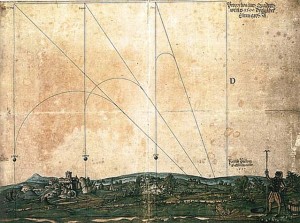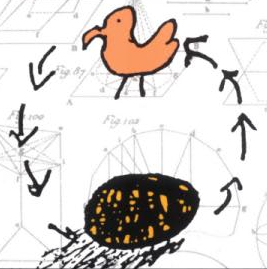Here is a nice summary of the martingale (also known as the gambler’s ruin) for lay audiences. This is really mathematics, applied here to the stock market / credit crisis, but it pops up in many other contexts. In particular, the analysis is identical to first passage calculations that predict the speed of biomolecular motors or the time for a DNA binding protein to locate its binding site, and also to polymer physics descriptions of DNA confinement.
The article refers to a collaboration between a mathematician, statistician and physicist to decide whether a flipped coin really comes up heads and tails with equal probability. Many concepts from introductory mechanics crop up in course of the collaboration, including projectile motion, angular momentum, air resistance, and experimental uncertainty.








